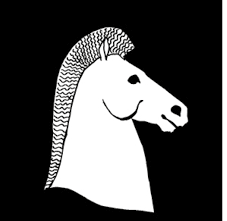

Freecycling Markets as Sustainable Materialist Movements? Closing Reuse Circularity Loops in Singapore


This paper seeks to redress the over-emphasis on state-driven circular policies in public and academic discourses by attending to two physical community-based freecycling markets at the emerging frontiers of circular waste/resource management in Singapore. Freecycling markets that close short reuse loops are a counterpoint to policies that close long recycling loops. Drawing primarily on empirical data from ethnographic fieldwork, we argue that freecycling markets exemplify a sustainable materialist movement concerned about the sustainability of material resources vis-à-vis the closing/shortening of material circularity loops. This is achieved through the reconfiguration of (a) material flows and (b) material relations. The redirection of unwanted but reusable household objects away from the incinerator and towards potential reusers animates a shift from a linear to circular material flow. We contend that this redirection of material resources for reuse is augmented by rescue and recirculation, which are relatively neglected within the scholarship on circular R-behaviours. Additionally, freecycling markets seek to transform material relations by encouraging care and stewardship, instead of use and disposal. Crucially, we highlight how freecycling markets may be plagued with material constraints that render them not-so-sustainable-and-scalable, thereby shedding light on the practical limits of sustainable materialist action. Taken together, this paper extends the scholarship on circular economies by bringing work on sustainable materialism into a productive dialogue with that on circular activisms and R-behaviours.
Circular economy, R-behaviours, sustainable materialism, reuse, rescue, recirculation
The transition towards a ‘circular economy’ has gained traction in the wake of a climate emergency and environmental crisis. As opposed to a linear take-make-dispose model, a circular economic paradigm has been touted as the solution to resource depletion and waste production by turning waste (i.e. outputs) into resources (i.e. inputs) for another production cycle. Such a transformation closes the circularity loop, which is realised via a range of R-behaviours (also called R-hierarchies or R-imperatives). Reike et al.’s (2018) hierarchy of circular R-behaviours, also called resource value retention options (ROs) include refuse (R0), reduce (R1), resell/reuse (R2), repair (R3), refurbish (R4), remanufacture (R5), repurpose (R6), recycle (material, R7), recover (energy R8) and re-mine (R9). They have divided their ten ROs into short, medium and long loops. Short loops (R0–R3) exist in proximity to the consumer. Medium loops (R4–R6) involve business networks for upgrading (e.g. refurbishing) a product that is indirectly linked to the consumer. Long loops (R7–R9) entail waste processing activities that are far removed from the consumer, with things being broken down and losing their original utility.
Scholars working in the field of circular economies have identified the predominance of top-down, often technocratic and market-based approaches at the expense of ground-up collaborative grassroots initiatives (Hobson 2020; Böhm et al. 2023). We seek to redress this over-emphasis on state-driven circular policies in public and academic discourses by attending to two case studies at the emerging frontiers of Singapore’s circular waste management. These case studies pertain to two physical community-based freecycling markets that facilitate the closing and shortening of circularity loops via reuse. Freecycling refers to the practice of giving and receiving something for free (i.e. without cost, Lou 2019). These freecycling markets serve as important counterpoints to the city state’s implementation of household recycling, which closes long circularity loops. Compared to long recycling loops, short reuse loops are preferable because they are better at conserving materials and energy by retaining an object’s form, function and value (Reike et al. 2018).
The paper’s main objective is to illuminate how freecycling markets are sustainable materialist movements and circular activisms from below that promote the shortening of reuse circularity loops. Drawing primarily on empirical data from ethnographic fieldwork, we argue that the freecycling markets exemplify what Schlosberg (2019) calls a sustainable materialist movement concerned about the sustainability of material resources in terms of material flows (through circularity loops) and everyday material relations/practices (through circular R-behaviours). Free(cycling) markets strive to reconfigure material flows by redirecting unwanted but reusable household objects away from the incinerator and towards potential reusers, thereby closing/shortening circularity loops in the process. The redirection of material resources for cascading reuse is augmented by rescue and recirculation, which have been relatively neglected within the scholarship on circular R-behaviours. Here, rescue refers to the material practice of salvaging discarded but functional objects from the rubbish bin, so as to ‘save’ them from being re/down-cycled or incinerated. Rescue usually needs to happen earlier, or further upstream, before recirculation.1 Recirculation entails re-distributing rescued/unwanted/surplus items to other potential end-users. Additionally, these markets seek to transform material relations/practices by encouraging stewardship (via reuse) and discouraging a consumerist, throwaway culture.
Simultaneously, we observed that objects in the free(cycling) markets are entrained in a complex entanglement of short and long material circuits lubricated by various R-behaviours beyond rescue and recirculation for reuse. Free(cycling) markets may also be plagued with material constraints and leakages in material circularity loops, thereby shedding light on the difficulties of sustaining sustainable materialist action. The material constraints that we have spotlighted are also profoundly spatial, and may apply to other densely populated, land scarce cities.
Taken together, this paper extends the scholarship on circular economies by bringing work on sustainable materialism into a productive dialogue with that on circular R-behaviours in two main ways. First, unpacking reuse more thoroughly in terms of rescue and recirculation extends Reike et al.’s (2018) ideas on short circularity loops. It also adds empirical meat to the conceptual skeleton of sustainable materialisms while foregrounding the extent to which sustainable materialist action can be transposed to circular initiatives in Singapore. Second, we posit that the conceptual purchase of sustainable materialism lies in its politicisation of collective material practices. Overall, this approach lends an explicitly materialist lens to an understanding of circular R-behaviours, thereby ameliorating the scholarship’s tendency to present the ‘consumer/user as a dematerialised subject, rather than one deeply embedded in … complex socio-material relations’ (Hobson 2020: 106).
The rest of this paper is divided into five further sections. Section two sketches Singapore’s state policies on household waste management, which are heavily oriented towards the closing of long recycling/recovery loops. Section three reviews the literature on how circular transitions can be operationalised through R-behaviours. We identify other R-behaviours such as rescue and recirculation that are vital to the closing of short reuse loops but are rarely explicitly foregrounded in the literature on circular R-behaviours. Section four describes the ethnographic case study approach that we have employed in this study. It also introduces two community-based freecycling markets as our case studies of a sustainable materialist movement. Section five attends to materialist interventions in the form of shortening material circularity loops via rescue and recirculation. It also addresses the complex material entanglements of short and long circularity loops. Section six critically appraises the socio-spatial-temporal sustainability of sustainable materialist freecycling markets in light of their material constraints and leakages.
Singapore’s eagerness to move towards a circular economy is reflected in its Zero Waste Masterplan (2019; Singapore Government News 2022b). A waste hierarchy (i.e. reduce, reuse, recycle before incineration and landfill, Bai and Sutanto 2002) has been woven into its environmental discourses, long before a circular economic agenda came onto its radar. When a circular transition became a state directive, the waste hierarchy, along with its three basic Rs (i.e. reduce, reuse, recycle), was integrated into a broader circular waste management regime.
Circularity has been construed as a panacea for (a) ‘rescuing’ Semakau landfill (more so than the environment, Chen and Tan 2021); and (b) ensuring ‘resource resilience’ (Zero Waste Masterplan 2019: 2). This rhetoric of rescue is evident in the National Environment Agency’s (NEA) social media campaign named ‘New Zero Waste Target to #SaveSemakau’. Semakau landfill is predicted to be full by 2035 at current rates of waste disposal (The Straits Times 2023a; Singapore Government News 2019). Although environmentalist terminologies like sustainability and circularity have been invoked, the state’s prime agenda is arguably to secure its own interests, from extending the lifespan of Semakau to ensuring an adequate supply of resources.
While the basic R-behaviours (i.e. reduce, reuse and recycle) are well-rehashed in the state’s environmental discourses, the policies and campaigns encouraging these behaviours have been highly uneven. Singapore has been closing long material loops via recycling (R7) and mostly energy loops via waste-to-energy (WTE) incineration plants (i.e. energy recovery, R8 in Reike et al.’s 2018 typology).2 Apart from a recent policy to reduce plastic bag consumption via a mandatory charge of five cents per bag at major supermarkets (from 3 July 2023, The Straits Times 2023b; 2023c; 2023d; 2023e), the state has traditionally given more weight to household recycling. A nationwide household recycling programme has been in force over the last two decades with marginal success (Tan and Khoo 2006). Under the Environmental Public Health Act, all public and private residential areas are required to have one recycling receptacle per apartment block, which takes the form of a blue co-mingled bin (Singapore Government News 2021). Nevertheless, Singapore’s household recycling has been fraught with issues such as high levels (40%) of contamination (from food waste) at source.3 The country’s overall household recycling rate is also low at 12% in 2022 (NEA 2022). Under the Zero Waste Masterplan, the state’s goal is to push the overall household recycling rate up to 30% by 2030 (Singapore Government News 2022a).
Notably, NEA has not spearheaded any campaigns or activities to close short reuse loops, even though a list of where consumers can donate, repair or resell their things has been appended on its website.4 Instructions to donate reusable but non-recyclable items are also pasted on blue recycling bins. If the closing of long recycling loops is not a viable or preferable R-behaviour then pivoting towards shortening loops via cascading reuse is necessary and long overdue. Freeganing/freecycling, food rescue and, to a lesser extent, dumpster diving (i.e. the rescue of discarded items) are currently surfacing as waste-light lifestyles that close material reuse loops (The Straits Times 2020; 2022). The profusion of alternative divestment and consumption networks has been invigorated by smart-phone applications such as Olio and GoodHood (Ong et al. 2020). While the trend in requesting for and consuming rescued food and other reusable items online is rising, the act of rescuing things from the rubbish bin (i.e. not directly from retailers or distributors) remains stigmatised.5
There are perhaps three reasons why state policies are heavily skewed towards the closing of long material and energy loops. First, for the technocratic state, the incineration of waste to recover energy is possibly the most efficient and convenient way to ‘get rid of’, or at the very least, shrink the bulk of waste generated in a land scarce country (with little space for storage). Second, recycling rates are the most straightforward to quantify (as opposed to measuring a reduction in consumption/waste and reuse rates). Although recycling rates are often mobilised as a proxy for quantifying how ‘circular’ an economy is, high recycling rates should not be conflated with high circularity rates (Price and Joseph 2000; Reike et al. 2018). Third, whereas the imperative to reduce and reuse threatens a consumerist-capitalist system, recycling is less damaging to the status quo and the retail landscape, since the recycling of post-consumer waste requires consumption in the first place. Economic sustainability continues to be the state’s foremost concern, as reflected in the state’s constant refrain about how a circular transition can present Singapore with new employment opportunities (Singapore Government News 2020a; 2020b).
R-behaviours have become the ways in which a circular economic model can be operationalised and scholars are expanding the scope of these R-behaviours beyond the rudimentary reduce, reuse and recycling (Barreiro-Gen and Lozano 2020; Khaw-ngern et al. 2021). Reike et al. (2018) sieved through 38 ‘re-’6 words to distill a typology of ten R-behaviours based on an order of priority. However, the rescue of material objects destined for the incinerator has been omitted in comprehensive reviews of R-behaviours, both in Reike et al’s initial list of R-behaviours, the final typology and typologies by other academics (e.g. Khaw-ngern et al. 2021). The pre-existing scholarship on rescuing discards is couched in terms like ‘dumpster diving’ and ‘gleaning’. Researchers show how sidewalks act as public spaces of provisioning in developed cities, where unwanted items are left outside their homes for curbside collection (on bulky item collection days) for gleaners/rescuers (Guillard and Roux 2014; Roux and Guillard 2016; Roux et al. 2018; Pyyhtinen and Lehtonen 2022). In this sense, rescue occurs higher up the value chain as a rescued object may be subsequently recirculated to someone else who needs it.
Recirculation, which is at the core of circular practices, has not been directly mentioned in discussions on R-behaviours. Rather, it is featured obliquely in resell/reuse (R2 in Reike et al’s typology), with reselling as a means of returning a product to the market economy (without much adaptation) for reuse. Besides reselling, academics highlight a slew of material divestment networks for individuals to find ‘relief from the burden of possession’ (Roux and Guiot 2020: 398; Ong et al. 2020). These networks can be classified into (a) a gift economy (e.g. donations to charity, free-cycling, freeganing without a monetary transaction); and (b) a second-hand ‘waste-based commodity frontier’ (Pyyhtinen and Lehtonen 2022) involving the resale of things (e.g. deals with junk traders, flea markets, garage/car-bootsales, thrift/second-hand stores). Such divestment circuits are not mutually exclusive, as things may be sold at throwaway prices and a pure market logic may not always undergird monetary exchanges (Herrmann 1997).
Scholars have pointed out that the recirculation of things through freecycling networks plays a vital role in promoting reuse as well as less materialistic and more sustainable consumption habits (Eden 2017; Klug 2017; Lou 2019; Liu et al. 2020; Gregson 2023). Aside from a gift economy, freecycling has also been identified as a means of collaborative consumption plugged into a sharing economy (Wieser 2019; Liu et al. 2019). Nevertheless, the relationship between freecycling and circularity has not been well examined thus far. An exception is Eden’s (2017) elaboration of how prosumption (i.e. the blurring of production and consumption) is reformulated by the circular movements of meanings and materials as things are disassembled and reassembled as well as shift from being ‘unwanted’ to ‘wanted’. Accordingly, she has highlighted the ways in which freecycling implicates other R-behaviours such as repair and repurposing, besides reuse. In handing things down and around, their materiality gets transformed, and value gets recirculated in these open-ended freecycling networks. More recently, smart phone applications and internet technologies have connected those wanting to buy/sell, rent, lend, barter/swap, freecycle/freegan7 virtually (see Norbutas and Corten 2018; Liu et al. 2020 on freecycling groups online). Nonetheless, there is still value in physical markets, as seen in Milios and Dalhammar’s (2020) work exploring the novel prospects of sharing re-usable items in Swedish recycling centres to gain insight into the most viable product groups for recirculation. Taken together, the rescue and recirculation of items in good condition increases their chances of being reused, thereby shortening material circularity loops. These considerations also intersect with the principle of cascading utilisation which seeks to sustain the value of material resources for as long as possible via multiple sequential (re)uses before energy extraction (Campbell-Johnston et al. 2020).
In analysing current trends in environmental activism, Schlosberg (2019) coins the term sustainable materialism to apprehend social movements that reconfigure material flows and foster collective practices associated with meeting basic material needs (e.g. food, energy). The approach also aims to cultivate a more sustainable relationship between humans and non-humans by raising awareness of the ways in which meeting one’s material needs can have negative repercussions on the environment. The three key tenets of sustainable materialism include, first, a commitment to more sustainable material flows and systems, especially when/where existing institutional structures policies have failed to do so. Beyond top-down environmental policies, it calls for new material practices to be enacted on the ground. Second, it is inherently political in nature and attends to community efforts (as opposed to individualist responsibility) to engender change. Third, it aims to (pre)figure an alternative means of meeting the material necessities of everyday life without shoring up consumerism.
Whereas Schlosberg (2019) places a great emphasis on the material flow/circulation of things, he has yet to engage with the circular economic agenda and has overlooked how such material flows are imbricated in material circularity loops. Schlosberg and Coles (2015: 164) also note that sustainable materialist action has spurred practices such as mending and upcycling without identifying them as circular R-behaviours (i.e. repair and repurpose, respectively). Moreover, they identify several collectives (e.g. farmers’ markets, community energy initiatives, Schlosberg and Coles 2015) that fall under the ambit of sustainable materialist movements but are not considered what Böhm et al. (2023) term circular society activisms. In contrast to macro-scale circular policies, scholars are beginning to document micro-scale circular activisms from below involving the collective organisation of R-behaviours like reuse, repair and repurposing (Hobson 2016; Holmes 2018; Bradley and Persson 2022; Carenzo et al. 2022; Böhm et al. 2023) but have discounted the recirculation of things, especially through freecycling. They have examined how these circular activisms provide an alternative form of urban provisioning, create a social infrastructure for successful circular transitions and prefigure circular futures in the present.
Meanwhile, the literature on circular economies has dealt with material resources and material circularity loops but has yet to systematically attend to circular materialisms vis-à-vis a new materialist ontology. Similarly, Hobson (2020: 99) asserts that discussions on circularity are ridden with ‘an impoverished view of our relationships with complex material cultures’. In short, new materialism attends to the relationalities between human and nonhumans, while stressing how humans are situated in a largely nonhuman material environment (Coole and Frost 2010). While work stemming from a new materialist approach is sparse, some exceptions include Isenhour and Reno’s (2019) understanding of repair and reuse as material carework that can rework one’s relationship with waste/things in a circular economy that is still largely underpinned by consumer capitalism. For Schlosberg (2019), sustainable materialism rides on new materialism in order to spotlight a politics of environmental sustainability realised by/through quotidian material practices.
We gathered the empirical data for this paper using a combination of ethnographic participation in two ground-up freecycling markets (i.e. our case studies) and a textual analysis of state/popular discourses. While ethnographic participation enabled us to reap fine-grained details about these initiatives, an analysis of state/popular discourses on plastic consumption, domestic recycling as well as circular economies offered broad brush strokes of state directives and general sentiments. In order to capture current state narratives on these themes, we conducted a LexisNexis database search of Singapore Government News from 2020 to July 2023 using ‘circular economy’ as keywords. This was complemented by a search of Singapore’s widely read daily English newspaper called The Straits Times from 2020 to July 2023 with ‘circular economy’, ‘freegan’ and ‘freecycling’ as key words to get a sense of the public’s attitudes on these topics deemed as newsworthy. Collectively, these state/popular discourses constitute the dominant socio-cultural context within which our case studies were situated.
We have identified two physical freecycling markets (free markets for short)8 as micro-scale sustainable materialist initiatives as our case studies. They are Singapore’s Really Really Free Market (SRRFM) and Touch and Take (TnT), and are both instrumental in redirecting material flows away from the incinerator and towards potential reusers. These cases represent emerging frontiers of Singapore’s circular waste management landscape that exceed mainstream state-orchestrated approaches. They were selected based on their valorisation of (cascading) reuse as well as to illustrate a varied mix of R-behaviours (i.e. rescue, recirculation, repurpose) as discussed earlier. SRRFM has a longer history and a more extensive geography compared to TnT, which is newer and primarily based in Toa Payoh.
Our empirical knowledge of these cases was derived from ethnographic participation in SRRFM and TnT. The first author’s engagements with these free markets varied in terms of duration and depth. Having volunteered with TnT from 2020–2022, the first author managed to accumulate an insider’s knowledge of how TnT was run. By contrast, the first author visited SRRFM irregularly over the decade as an attendee, and more frequently from 2022–2024. The many informal conversations the first author had with Woon, Teo, Alex and at least twenty market attendees informed our understanding of these free(cycling) markets. Alex and these market attendees have been given pseudonyms to ensure their anonymity.
We obtained clearance from our university’s Institutional Review Board to conduct ethnographic fieldwork in spaces where individuals were likely to be executing R-behaviours related to the divestment of household waste. The markets’ organisers were aware of the first author’s positionality as a researcher. While the first author did not always introduce herself as a researcher each time she interacted with market attendees, she ensured that she did ask for consent whenever she approached them for a conversation with some research objectives in mind. Additionally, she took pictures on her mobile phone to document ‘noteworthy’ moments and wrote brief field notes after each market she went for.
Singapore’s Really Really Free Market (SRRFM) began in 2009 and is the city state’s longest running nomadic flea market based on a gift economy. This flea market is a divestment platform for anyone who would like to ‘free their things’ (Lou 2019: 258) or take things on market days, which happens bi-monthly (post-COVID-19). Taking inspiration from the Really Really Free Markets in America, the organisers and founders of SRRFM, Woon Tien Wei and Jennifer Teo, envision it in ways that are quite aligned to Schlosberg’s (2019) notion of a sustainable materialist movement. SRRFM locates the political in practices enabling material and social sustainability. Consonant with the tenets of sustainable materialism, the founders hope to change the material relations and responsibilities to each other and other nonhumans. As such, Teo is quick to clarify that SRRFM is built on ‘more than just people taking and giving away things [i.e. material objects], it is also about fostering solidarity and mutual aid’. Put another way, SRRFM connects prospective givers to recipients, and in so doing, embeds idealised values around ‘sharing, caring, and co-operating’ in material exchanges (see also Lou 2019 on communal freeganism/freecycling in Hong Kong).
In the last decade, the political sphere for environmental movements and ground up initiatives in Singapore has expanded slightly. Neo (2021: 111) calls this a post-politics, one that portrays an ‘aura of political openness without necessarily ceding political ground and political legitimacy to non-state elements’. Movement strategies in general have adapted to the authoritarian state by not antagonising it and questioning its legitimacy (Chua 2012). While SRRFM may be imagined as a response to capitalocentrism, it does not present itself as being overtly political or confrontational, and does not disrupt the state’s developmental ethos overall. Rather, it co-opts the state’s interest in resource conservation and community building.
Touch and Take9 (TnT) began in 2020 as a newer, more localised version of SRRFM. TnT is mostly based in Toa Payoh, a neighbourhood in central Singapore, where its founder Alex lives.10 TnT usually happens in conjunction with other community initiatives such as the distribution of rescued food (called the Pasar), the stocking up of community fridges and recycling drives. The format of TnT is similar to that of SRRFM, with items for freecycling being laid out on mats in a public space (e.g. void deck of a public housing flat).
Nevertheless, there are some distinctions in how SRRFM and TnT are being conceptualised and implemented. SRRFM was birthed with anti/post-capitalist and artistic ideologies (with environmental sustainability as a corollary) whereas TnT was conceived with waste reduction in mind. Specifically, TnT is an avenue for Alex to find new homes for (i.e. recirculating) the things that he has picked up (i.e. rescued) at several bulky refuse areas near his flat almost nightly. Impulse buys, unsuitable (online) purchases and a throwaway culture mean that it is not unusual for Alex to find new items that are still in their original packaging. From 2021 to 2022 there were about two TnT market days a month in two of four to five rotating locales in Toa Payoh lasting between one to five hours each time. TnT took a hiatus in 2023 as Alex decided to concentrate on his small retail business (see section 6.3).
Our two case studies are instructive in fleshing out the intersections between sustainable materialism and circular activisms from below by illustrating (a) how material circularity loops can be shortened ‘with a minimum of entropy’ (Reike et al. 2018: 254) and (b) how short loops cannot be understood in isolation from longer ones.
Freecycling markets are sustainable materialist interventions in linear flows of material products from the retailer, consumer and to the incinerator. Such interventions involve shortening material circularity loops, accomplished via the rescue of things from the incinerator and the recirculation of reusable things among market attendees. Rescuers mentioned that they bring things they have salvaged but do not have a use for to SRRFM and/or TnT to ‘pass them on’. In other instances, consumers may only require something temporarily. As such, things occasionally get taken only to be recirculated and returned to the mat weeks later. Overall, the material co-presence of a critical mass of givers, takers and reusable things allows for the efficient recirculation of material resources (instead of travelling to different places for different things). As a regular giver at SRRFM, Zing remarked that her ‘things move slowly on Olio (freecycling application), there’s a better chance that they might be taken at a free market, where everyone congregates’ (see Figures 1 a and b).
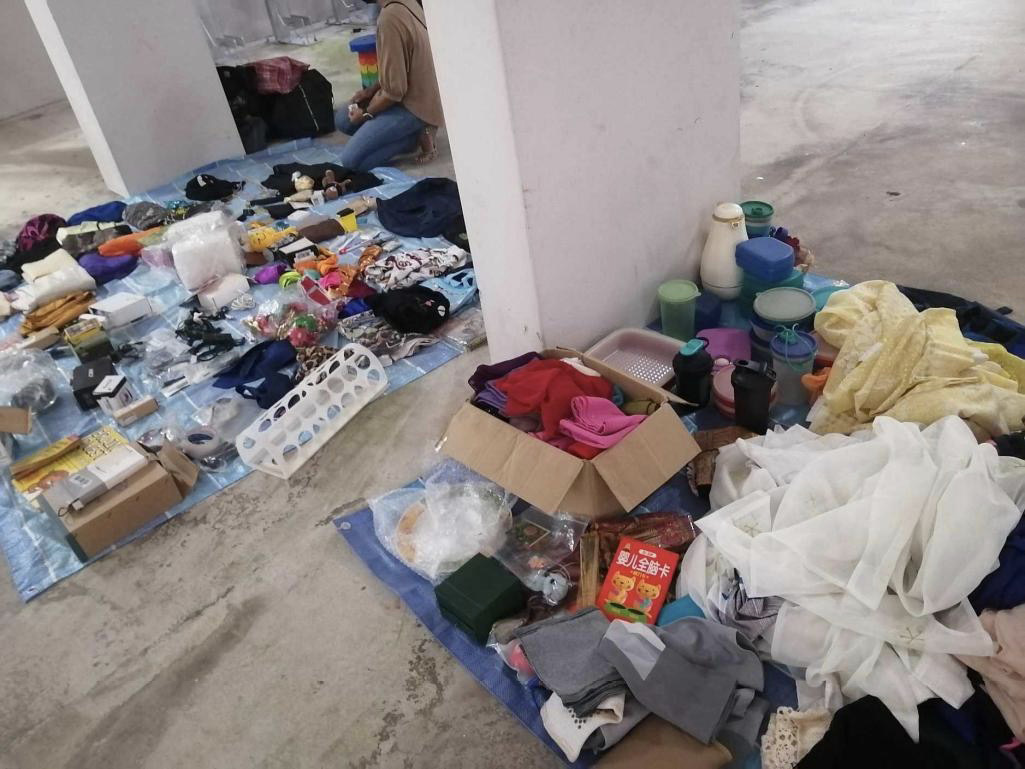
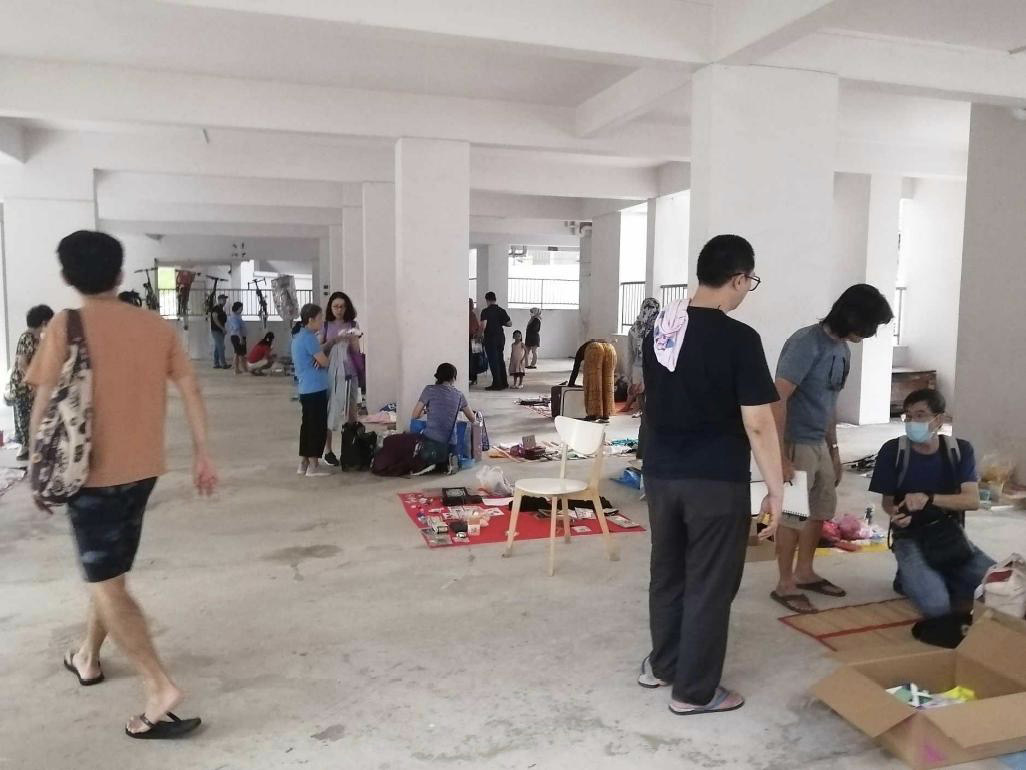
Figures 1 a and b. SRRFM at a public housing void deck (June 2024).
Source: Author’s photographs.
Based on our ethnographic observation, we contend that freecycling markets close and shorten material reuse loops not just by forging geographically proximity (between a product and a user) but also relational proximity (among givers and users). Short loops are traditionally defined in terms of how close a product is to their initial form/function and its end users. TnT shortens circularity loops by fostering geographically proximate relationships with its (fewer) market attendees, who reside in the vicinity of Toa Payoh. By contrast, SRRFM has a wider spatial reach as it has been held in multiple locations across the island and can attract about 300 attendees each time from all parts of Singapore. The localisation of TnT’s material circuits benefits its attendees who tend to be older and are therefore more likely to have mobility issues. On top of saving them transport costs and the hassle of commuting, regular market attendee and environmentalist Han shared that having ‘hyper-local communities help to keep carbon footprints low’.
Simultaneously, material reuse loops are shortened when givers appeal to potential users who may be relationally closer to them. Whereas SRRFM is solely on social media to publicise its upcoming market days, the recirculation of things continues unabated in digital spaces, even after a physical TnT market is over. Instead of a dedicated Whatsapp channel, Alex occasionally sends a curated list of items to give away – alongside a wish list of items that he and his friends are looking for – as personalised messages to an ‘exclusive’ social circle. Since TnT started, his social circle has been stretched to include market-attendees-turned-friends living around central Singapore.
Interestingly, interventions in material circuits can catalyse a shift in one’s material relations with things, from use-and-dispose to care-and-stewardship. When the first author asked Flora why she chose to bring the things she no longer has a use for to SRRFM instead of conveniently depositing them somewhere else, she mentioned that ‘realistically speaking [she didn’t] think that thrift stores have the capacity to deal with them’. Before leaving the market she shared that ‘lugging my stuff over in a Grab [i.e. a car ride sharing service] and bringing the left overs, it really does change my relationship with these things’. She conceded that being responsible for her ‘discards’ by giving them away at SRRFM still does not quite ‘absolve [her] guilt towards the things she no longer wants, but at least [she has] tried her best [to recirculate them]’. Flora has also influenced two of her friends who are moving out of Singapore to do the same with the things that they will be leaving behind. When the first author visited Flora’s mat, the latter was effusive in recommending what she thought might fit or suit the first author based on a visual appraisal.
Accordingly, we argue that social relationalities are integral to sustaining material circularity loops, which is in line with sustainable materialism’s privileging of a collective rather than an individualist politics (see Schlosberg and Coles 2019). This also resonates with Campbell-Johnston et al.’s (2020) argument that an item’s sequential (re)use is not a given. Rather, (re)use is underpinned by relational labour bound up in what Hobson (2020) calls social circularities. For Teo, the ‘meaningful relationships’ that a non-monetary material exchange can foster among individuals are paramount, with the ‘“free” in SRRFM denoting not just the free circulation of things but also skills and knowledge’, especially those related to material resource conservation (e.g. location of repair clinics).
Additionally, circular R-behaviours can be more holistically apprehended as complex entanglements of short (e.g. reduce, reuse) and long (e.g. recycling, recovery) material circularity loops. Although we seek to underline the salience of rescue and recirculation in cascading reuse, material circuits are multi-directional and seldom neat or discrete, as they tend to cross-cut and occur in tandem.
Alex, who used to be a spokesperson for SRRFM, capitalises on SRRFM’s larger visitorship to divest himself of rescued objects that he is unable to clear/recirculate at TnT, thereby reducing waste. Depending on the quality and/or recyclability of the unclaimed items in question, long material recycling and energy recovery loops will inevitably be enlisted (see following section). Alex believes that the condition of the items he displays at TnT affects the ‘take-up rate’ or whether someone might be willing to reuse them, regardless of their functionality. ‘Stock-trimming’ by depositing not-so-good-looking things in blue recycling bins (if they are recyclable) or disposing of them as general waste translates into material ‘quality control’ (for the next market). Alex also picks out useful items at SRRFM for himself and what he thinks his TnT-attendees-turned-friends might like, thereby indicating that givers can also be takers at a market. In this case, a person can be a node for the inflow and outflow of material resources.
Reiterating the role that the relational plays in closing/sustaining material loops, collaborations between SRRFM and other organisations introduce other R-behaviours that are not its mainstay to market attendees while boosting visitorship. SRRFM is periodically invited to be part of a larger community event, which is a testament to the dense relationalities it has cultivated with other activist/non-profit groups, and how well-known it has become. For example, in December 2022, SRRFM was part of a sustainability-themed EarthFest at Marina Barrage, which was accompanied by educational messaging on reducing energy and water consumption. In March 2023, SRRFM happened alongside Repair Kopitiam11 (see Figure 2), a collective which teaches individuals how to fix their electric/electronic equipment, rather than discarding them. Repair prolongs an item’s lifespan, aids in its continued use and slows down the rate at which materials circulate.
Having considered what these case studies have accomplished, the following sections detail why they might be not-so-sustainable materialist initiatives, in light of spatio-material constraints and leakages in material circularity loops.
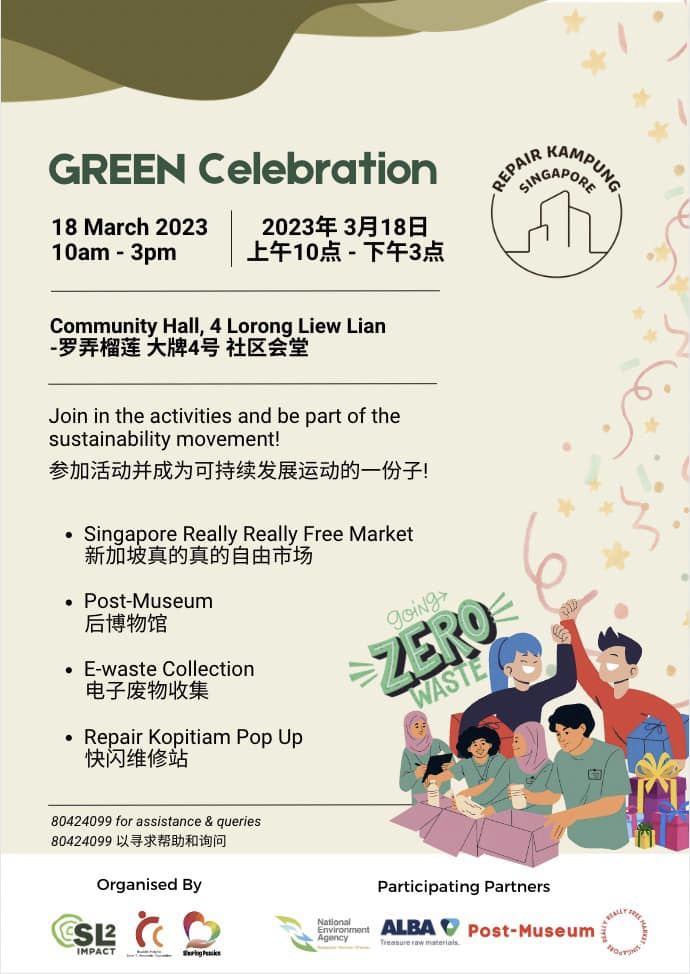
Figure 2. Electronic poster of ‘Green Celebration’, with SRRFM and Repair Kopitiam
https://www.facebook.com/photo?fbid=723967152849763&set=a.599389768640836 (accessed June 2023).
Schlosberg (2019) notes that sustainable materialist movements give weight to the interrelations between everyday practices (i.e. R-behaviours like reuse) and material arrangements. With respect to SRRFM and TnT, such interrelations are manifested in the form of spatial arrangements and constraints, which explains why their efforts have been piece-meal. Space is at a premium in Singapore’s high-rent, high-density living. A public rent-free space is arguably one of the most pertinent factors in determining whether free markets can happen in the first place (i.e. space for market transactions, storage). Relational-material exchanges play out better as an embodied co-presence with others/things (e.g. handling objects, trying things before deciding to adopt them). Theoretically, an object of a decent quality will eventually get ‘adopted’ in time. But this cannot happen if free markets have to clear out of a temporary location after a few hours, rendering the clearing up/out of unwanted leftovers a major problem. This is compounded by the lack of a permanent rent-free storage space for SRRFM and TnT, which inadvertently implies that waste (i.e. unclaimed items) is ironically created after an activity that is supposed to curtail waste production.
SRRFM and TnT have attempted to partially resolve this by advising givers to take ownership of their things and bring back any leftovers after the event. SRRFM started out with big communal mats but switched to smaller individual mats for each giver in order to better differentiate who the items belong to. Woon and Teo have prompted givers to be at their mats to interact with recipients, while eliminating the propensity for them to ‘dump’ their ‘waste’ (or ‘donation’)12 at SRRFM and leave. Items at TnT normally belong to Alex but if other freecyclers/rescuers in Toa Payoh wish to ride on TnT as a divestment platform, they will also have to bring their leftovers back. Nonetheless, limitations in living/storage space makes it untenable to hold on to items without an immediate use.
Circular washing discourses claiming that all waste material outputs are infinitely recoverable and transformable into resource inputs necessitate more critical interrogation (see Alexander and O’Hare 2020). Leakages in material circularity loops happen when resource inputs and outputs are inadequately matched or connected. Material leakages usually manifest themselves in the inability to find someone to adopt a freecycled object on a market day, considering the time, effort and serendipity needed. In extreme cases, the connection between resource inputs and outputs may be impeded by contestations among givers and takers. Woon reveals that ‘some givers may have their own idiosyncratic take on who they would prefer to give their things to and how much, with givers being upset with greedy snatchers or hoarders’.
Unlike digital freecycling platforms, SRRFM and TnT will have to grapple with the troublesome materiality of unclaimed items when a market is over. Since SRRFM and TnT do not have a dedicated storage facility keeping leftovers, they will have to be cleared on the spot. As SRRFM operates on a larger scale than TnT, Woon reveals that ‘a sizeable volume of disowned waste is generated post-market’ (see Figure 3a and Figure 3b). How these left-overs are dealt with at SRRFM sometimes depends on the available resources at hand (e.g. volunteers who can drive and deposit the remaining good quality items at thrift shops for resale). Most of the time, however, leftovers are thrown away by SRRFM’s organisers and volunteers. On rare occasions, volunteers at SRRFM who are very invested in a zero-waste lifestyle may wind up rescuing selected unclaimed leftovers destined for the incinerator (See Figure 3c). Sometimes Teo does this too by looking through the discard pile and ‘saving useful things’ and ‘many things are useful to [her]’. Teo subscribes to the philosophy of ‘save first, negotiate for [storage] space later’ while recognising that ‘we cannot save everything’. Alex tries his best to keep TnT’s remaining stock but he only has space for two large luggage boxes which he brings home on his bicycle or by public transport. Anything more gets recycled or discarded, particularly poorer quality items.
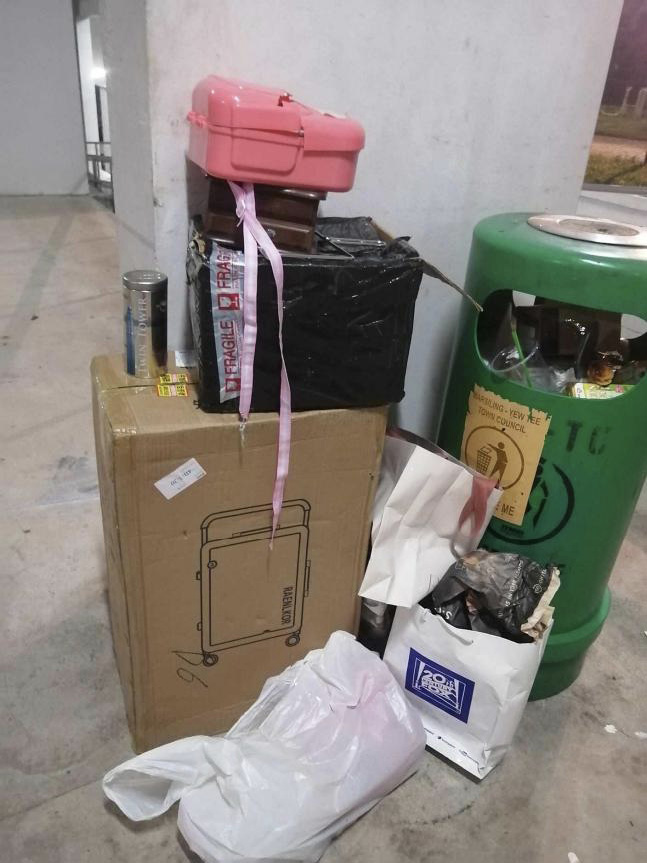
Figure 3a. Waste produced after SRRFM (June 2024).
Source: Author’s photograph.
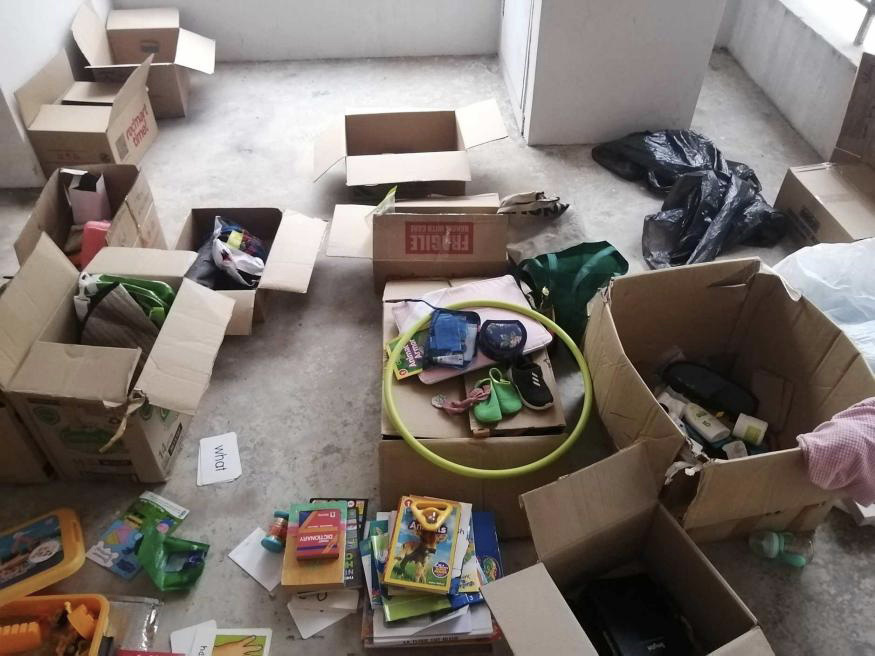
Figure 3b. These things at SRRFM were not ‘adopted’ after the market, neither did the giver return for them. They were eventually disposed as general trash (June 2024).
Source: Author’s photograph.
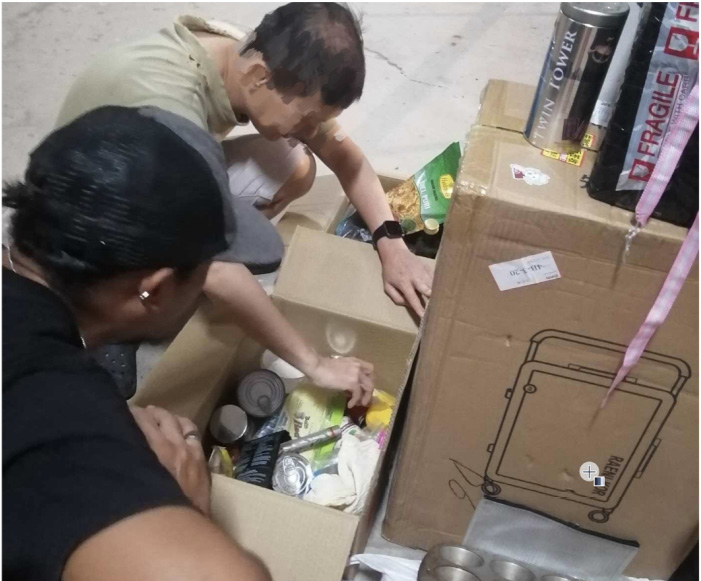
Figure 3c. Volunteers going through the ‘discard pile’ of expired food items with the intention of rescuing them after SRRFM. Faces have been blurred to ensure anonymity (June 2024).
Source: Author’s photograph.
Alex’s, Woon’s and Teo’s deliberations coincide with what Campbell-Johnston et al. (2020) have identified as critical moments whereby choices about material retention (i.e. keep, recirculate) and divestment (i.e. throw) are being made. Nevertheless, these moments are inflected through context-specific restrictions that exceed the prescriptive guidelines Campbell-Johnston et al. (2020) have devised for optimising material resources according to their monetary value, quality and functionality.
Material logistical and organisational difficulties aside, such community initiatives are labour-intensive, time-consuming and subsist on unpaid labour (i.e. volunteers). TnT used to stretch across five to seven hours with ten or eleven mats for each session, for about one and a half years, before Alex concluded that a scaling down of TnT to one to two hours with three or four mats was more manageable. Whereas recirculation and reuse via the gift and/or second-hand economy have been considered in many other cities, a more concerted effort at integrating reuse into Singapore’s circular waste and resource management is lacking, perhaps due to the constraints we have mentioned. Such constraints are also impediments to the scaling-up of these freecycling markets (i.e. involving more people and more material items being circulated at a single event), which explains why SRRFM and TnT are nomadic, episodic and community-level events. Hence, a ‘scalar mismatch’ (Liboiron and Lepawsky 2022) still exists when these freecycling initiatives as a whole are measured against the total amount of unwanted but reusable ‘waste’ that all of Singapore’s population generates.
Finally, Alex is concerned about the economic sustainability of his initiative – a capitalocentric haunting due to his embeddedness within a wider political-economic matrix. Alex has developed another social enterprise where he sells second-hand CDs, DVDs and books for a living order to compensate for TnT’s non-profit nature. Taken together, such intervening trade-offs throw up the slippages between sustainable materialism in theory and sustaining these materialist R-behaviours in practice.
Along with Milios and Dalhammar’s (2020) call to identify strategic partnerships that can enable the reuse of material resources, we suggest that state/institutional assistance in the provision of market and storage spaces will be immensely helpful. On top of allocating space for infrastructure associated with long recycling/recovery loops (e.g. blue recycling bins, waste-to-energy plants), space is also needed for activities related to closing short reuse loops (see Hobson 2020 on circular spaces). In the last year (after our initial study of SRRFM and TnT) the first author has noticed another recurring freecycling market surfacing in the public housing estate where she lives (see Figure 4a, Figure 4b and Figure 4c). The Residents Committee13 – which has state support and a dedicated space – near her has appropriated the concept of a freecycling market and runs it alongside a monthly Repair Clinic at the void deck of a public housing flat.
While it might not be feasible for freecycling markets to scale up, there are instances of them scaling out or sideways. We posit this scaling sideways, or the horizontal proliferation or replication of freecycling markets organised by multiple community groups can alleviate labour constraints and volunteer fatigue. When this freecycling market and repair clinic started more than six months ago, it ran from 10 a.m. to 3.30 pm. The duration of these initiatives has been progressively shortened over time, to about an hour in the mornings (see Figure 4d). Not unlike how TnT has evolved, changes like these are perhaps indicative of volunteer fatigue.
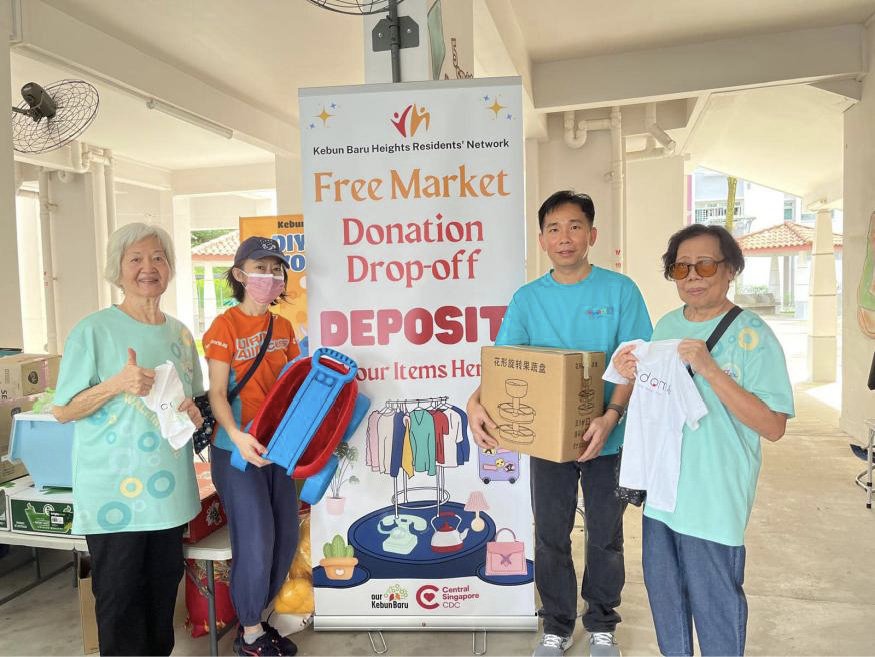
Figure 4a. Freecycling market at Block 106 Ang Mo Kio void deck organised by Kebun Bahru Heights Resident’s Network.
https://www.facebook.com/photo/?fbid=861825735987165&set=pcb.861827532653652 (accessed June 2024). Image use courtesy of the current Chairman of the Resident Network.
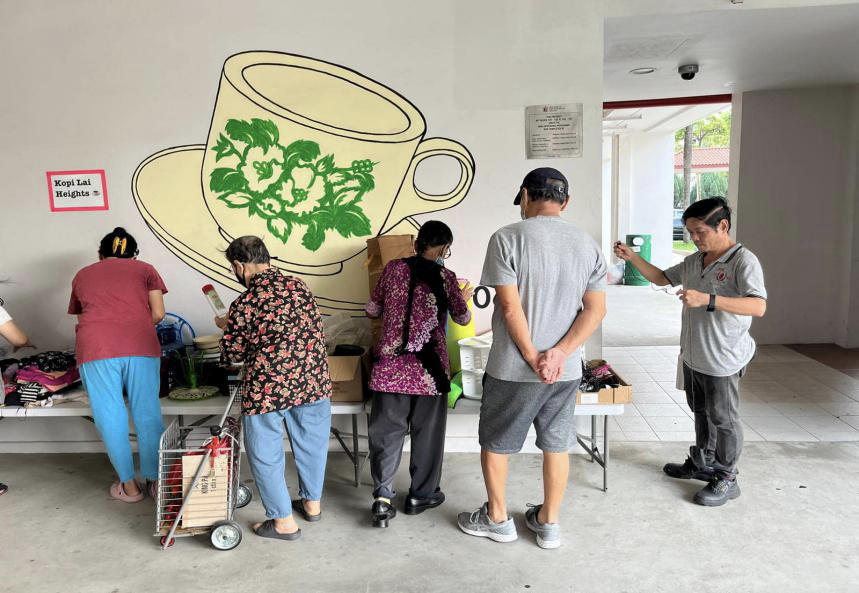
Figure 4b. People and things at the freecycling market organised by Kebun Bahru Heights Resident’s Network
https://www.facebook.com/photo/?fbid=861825845987154&set=pcb.861827532653652 (accessed June 2024). Image use courtesy of the current Chairman of the Resident Network.
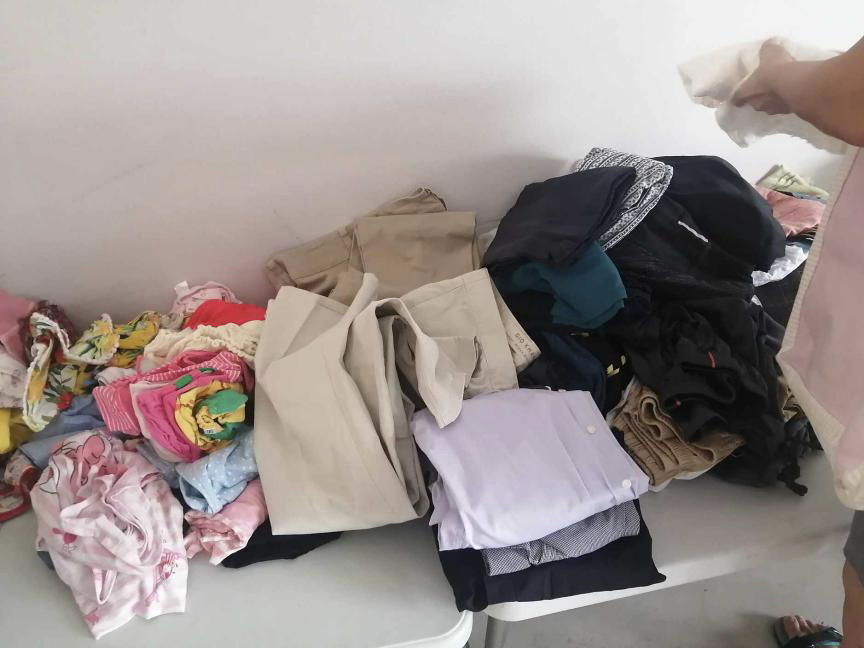
Figure 4c. Things at the freecycling market organised by Kebun Bahru Heights Resident’s Network (June 2024)
Source: Author’s photograph.
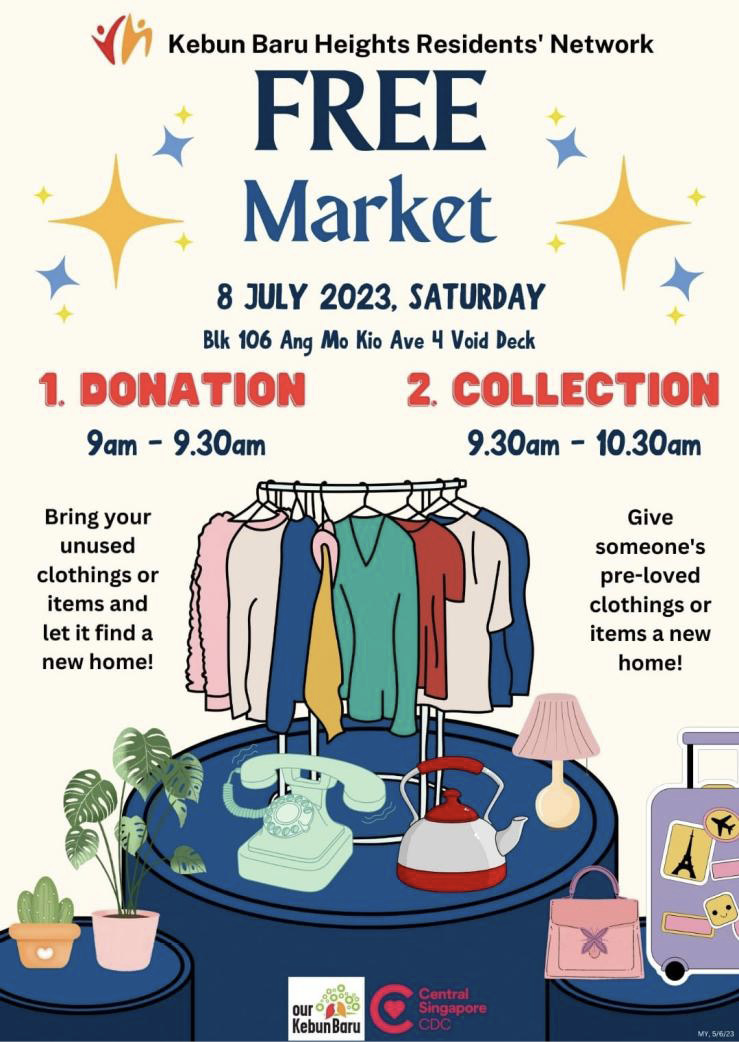
Figure 4d. Electronic poster of an upcoming monthly freecycling market at Kebun Bahru Heights
public access, https://www.facebook.com/photo/?fbid=653301420172932&set=a.556102573226151 (accessed June 2024).
In spotlighting the conjunction between sustainable materialisms and circular activisms, we have enriched the current literature on circular economies by addressing not just material circularities but also deepening conceptual engagement with circular sustainable materialisms. More specifically, we have illustrated how freecycling markets can be analysed through the lens of sustainable materialism, which situates the material realisation of circular activisms in nitty-gritty, everyday forms of urban provisioning. We surmise that the locus of power for transformative change lies in (a) material participation and (b) community organising. Market organisers and other market attendees who are more committed to producing zero waste do refrain from participating in prevailing ‘circulations of power [e.g. consumerism], and [hope] to create new circulations that are more [socially/environmentally] just’ (Schlosberg 2019: 307). For SRRFM, the temporary suspension of monetary transactions and the privileging of something’s (re)use instead of its exchange value, may function as a redistributive mechanism.
Most market attendees partake in redirecting/reconfiguring linear material flows and subverting normative consumption patterns by driving ‘new circulations’ – rescuing, recirculating and ultimately reusing things, even if for a short period of time. Not unlike systems thinking that undergirds a circular logic, we have shown that ‘energy’ (i.e. volunteer, relational labour) as well as material inputs (i.e. things for recirculating, an available/accessible venue) are required for sustaining free(cycling) markets, and that this can only be accomplished as a community. Social relationalities, including collaborations among community groups are pivotal in lubricating alternative ‘new circulations’ that close material loops.
Freecycling markets may be environmentally sustainable but not-so-sustainable with respect to the space, time and labour needed to run them in Singapore. Such a disjuncture illuminates the significance of contextualising sustainable materialist movements in its spatio-material and socio-cultural context. While material inputs in terms of reusable things are readily available, suitable spaces, unpaid volunteer labour and community networks necessary to organise and sustain such markets are in short supply. These markets’ failure to scale up and to multiply sideways instead may offer some transferable takeaways for sustainable circular activisms in densely-populated, land scarce cities. Notwithstanding the shortcomings of our sustainable materialist case studies, they represent ‘small stories of closing loops’ (Hobson 2020: 99). Rather than wait for radical shifts in the economic system, these are commendable efforts at carving out a prefigurative space-time for mainstreaming circular R-behaviours. Although it may not be (entirely) possible to quantify the degree to which these markets have have augmented Singapore’s circularity rates, they signal the possibility of consciousness raising among the general public in the city state.
This research project is funded by Singapore’s Ministry of Education Academic Research Fund Tier 2 (MOE-T2EP40121-0005). The authors are very grateful to the co-founders of SRRFM, Teo and Woon, as well as the founder of TnT, Alex, for their kind assistance.
Qian Hui Tan
Post-doctoral research fellow
Asia Research Institute
10 Kent Ridge Cres #07-01 AS8
Singapore 119260
Email: tqh@nus.edu.sg
Brenda S.A. Yeoh
Department of Geography and Asia Research Institute
10 Kent Ridge Cres #07-01 AS8
Singapore 119260
Email: geoysa@nus.edu.sg
Alexander, C. and P. O’Hare. 2020. ‘Waste and its disguises: Technologies of (un)knowing’. Ethnos: 1–25. https://doi.org/10.1080/00141844.2020.1796734
Bai, R. and M. Sutanto. 2002. ‘The practice and challenges of solid waste management in Singapore’. Waste Management 22 (5): 557–67. https://doi.org/10.1016/S0956-053X(02)00014-4
Barreiro‐Gen, M. and R. Lozano. 2020. ‘How circular is the circular economy? Analysing the implementation of circular economy in organisations’. Business Strategy and the Environment 29 (8): 3484–494. https://doi.org/10.1002/bse.2590
Böhm. S, C.H. Ho, H. Holmes, C. Manolchev, M. Rödl and W. Spekkink. 2023. ‘Circular society activism: prefigurative communities in everyday Circular Economy action’. In A. Alexander, S. Pascucci and F. Charnley (eds), Handbook of the Circular Economy: Transitions and Transformation. Boston: Walter de Gruyter GmbH & Co KG. pp. 241–59. https://doi.org/10.1515/9783110723373-017
Bradley, K. and O. Persson. 2022. ‘Community repair in the circular economy–fixing more than stuff’. Local Environment 27 (10–11): 1321–337. https://doi.org/10.1080/13549839.2022.2041580
Campbell-Johnston, K. W.J. Vermeulen, D. Reike and S. Brullot. 2020. ‘The circular economy and cascading: towards a framework’. Resources, Conservation & Recycling X (7): 100038. https://doi.org/10.1016/j.rcrx.2020.100038
Carenzo, S., P. Juarez and L. Becerra. 2022. ‘Is there room for a circular economy “from below”? Reflections on privatisation and commoning of circular waste loops in Argentina’. Local Environment 27 (10–11): 1338–354. https://doi.org/10.1080/13549839.2022.2048258
Chen, Z. and A. Tan. 2021. ‘Exploring the circular supply chain to reduce plastic waste in Singapore’. LogForum 17 (2): 271–86. https://doi.org/10.17270/J.LOG.2021.564
Chua, L.J. 2012. ‘Pragmatic resistance, law, and social movements in authoritarian states: The case of gay collective action in Singapore’. Law & Society Review 46 (4): 713–48. https://doi.org/10.1111/j.1540-5893.2012.00515.x
Coole, D. and S. Frost. 2010. New materialisms: Ontology, Agency, and Politics. Durham: Duke University Press. https://doi.org/10.1515/9780822392996-002
Eden, S. 2017. ‘Blurring the boundaries: Prosumption, circularity and online sustainable consumption through Freecycle’. Journal of Consumer Culture 17 (2): 265–85. https://doi.org/10.1177/1469540515586871
Gregson, N. M. Crang, S. Fuller and H. Holmes. 2015. ‘Interrogating the circular economy: The moral economy of resource recovery in the EU’. Economy and Society 44 (2): 218–43. https://doi.org/10.1080/03085147.2015.1013353
Guillard, V. and D. Roux. 2014. ‘Macromarketing issues on the sidewalk: How “gleaners” and “disposers” (re)create a sustainable economy’. Journal of Macromarketing 34 (3): 291–312. https://doi.org/10.1177/0276146713518562
Herrmann, G.M. 1997. ‘Gift or commodity: What changes hands in the US garage sale?’ American Ethnologist 24 (4): 910–30. https://doi.org/10.1525/ae.1997.24.4.910
Hobson, K. 2016. ‘Closing the loop or squaring the circle? Locating generative spaces for the circular economy’. Progress in Human Geography 40 (1): 88–104. https://doi.org/10.1177/0309132514566342
Hobson, K. 2020. ‘“Small stories of closing loops”: social circularity and the everyday circular economy’. Climatic Change 163 (1): 99–116. https://doi.org/10.1007/s10584-019-02480-z
Holmes, H. 2018. ‘New spaces, ordinary practices: Circulating and sharing within diverse economies of provisioning’. Geoforum 88: 138–47. https://doi.org/10.1016/j.geoforum.2017.11.022
Isenhour, C. and J. Reno. 2019. ‘On materiality and meaning: Ethnographic engagements with reuse, repair & care’. Worldwide Waste: Journal of Interdisciplinary Studies 2 (1): 1. http://doi.org/10.5334/wwwj.27
Khaw-ngern, K. P. Peuchthonglang, L. Klomkul and C. Khaw-ngern. 2021. ‘The 9Rs strategies for the circular economy 3.0’. Psychology. Education Journal 58: 1440–446.
Klug, K. 2017. ‘A gift for a stranger: Freecycling as a current lifestyle of sustainable consumption’. In T. Osburg and C. Lohrmann (eds), Sustainability in a Digital World: New Opportunities Through New Technologies. Cham: Springer. pp. 201–07. https://doi.org/10.1007/978-3-319-54603-2_17
Lansink, A. 2018. ‘Challenging changes – Connecting waste hierarchy and circular economy’. Waste Management and Research 36 (10): 872. https://doi.org/10.1177/0734242X18795600
Liboiron, M. and J. Lepawsky. 2022. Discard Studies: Wasting, Systems, and Power. Cambridge, MA: MIT Press. https://doi.org/10.7551/mitpress/12442.001.0001
Liu, F., Z. Johnson, C. Massiah and T.M. Lowrey. 2020. ‘Nonmonetary and nonreciprocal freecycling: Motivations for participating in online alternative giving communities’. Journal of Consumer Behaviour 19 (4): 339–50. https://doi.org/10.1002/cb.1810
Lou, L.I.T. 2019. ‘Freedom as ethical practices: On the possibility of freedom through freeganism and freecycling in Hong Kong’. Asian Anthropology 18 (4): 249–65. https://doi.org/10.1080/1683478X.2019.1633728
Milios, L. and C. Dalhammar. 2020. ‘Ascending the waste hierarchy: Re-use potential in Swedish recycling centres’. Detritus 9: 27–37. https://doi.org/10.31025/2611-4135/2020.13912
National Environment Agency Singapore (NEA). 2022. https://www.nea.gov.sg/our-services/waste-management/waste-statistics-and-overall-recycling. Accessed May 2023.
Neo, H. 2021. ‘The post-politics of environmental engagement in Singapore’. In Paul Jobin , Ming-sho Ho and Hsin-Huang Michael Hsiao (eds), Environmental Movements and Politics of the Asian Anthropocene. ISEAS Publishing. pp. 10–37. https://doi.org/10.1355/9789814951401-008
Norbutas, L. and R. Corten. 2018. ‘Sustainability of generalized exchange in the sharing economy: the case of the “freecycling” Facebook groups’. International Journal of the Commons 12 (1): 111–33. https://doi.org/10.18352/ijc.789
Ong, C., L. Fearnley and S.B Chia. 2021. ‘The diversity of divestment in Singapore: Junk commodities, charity gifts, and recycling bins’. Environment and Planning E: Nature and Space 4 (2): 603–22. https://doi.org/10.1177/2514848620924564
Price, J.L. and J.B. Joseph. 2000. ‘Demand management – a basis for waste policy: a critical review of the applicability of the waste hierarchy in terms of achieving sustainable waste management’. Sustainable Development 8 (2): 96–105. https://doi.org/10.1002/(SICI)1099-1719(200005)8:2<96::AID-SD133>3.0.CO;2-J
Pyyhtinen, O. and T.K. Lehtonen. 2022. ‘The gift of waste: The diversity of gift practices among dumpster divers’. Anthropological Theory: 14634996221117318. https://doi.org/10.1177/14634996221117318
Reike, D., W.J. Vermeulen and S. Witjes. 2018. ‘The circular economy: new or refurbished as CE 3.0? – exploring controversies in the conceptualization of the circular economy through a focus on history and resource value retention options’. Resources, Conservation and Recycling 135: 246–64. https://doi.org/10.1016/j.resconrec.2017.08.027
Roux, D. and D. Guiot. 2020. ‘Second-hand markets: Alternative forms of acquiring, disposing of, and recirculating consumer goods’. In L. Visconti et al. (eds). Marketing Management. London: Routledge. pp. 388–407. https://doi.org/10.4324/9780203710807-29
Roux, D. and V. Guillard. 2016. ‘Circulation of objects between strangers in public space: An analysis of forms of sociality among disposers and gleaners’. Recherche et Applications en Marketing (English Edition) 31 (4): 28–46. https://doi.org/10.1177/20515707166641
Roux, D., V. Guillard and V. Blanchet. 2018. ‘Of counter spaces of provisioning: reframing the sidewalk as a parasite heterotopia’. Marketing Theory 18 (2): 218–33. https://doi.org/10.1177/147059311773
Schlosberg, D. 2020. ‘Sustainable materialism and environmental justice’. In B. Coolsaet (ed.) Environmental Justice. London: Routledge. pp. 303–15. https://doi.org/10.4324/9780429029585-27
Schlosberg, D. 2019. ‘From postmaterialism to sustainable materialism: the environmental politics of practice-based movements’. Environmental Politics. 1–21. https://doi.org/10.1080/09644016.201 9.1587215
Schlosberg, D. and R. Coles. 2016. ‘The new environmentalism of everyday life: Sustainability, material flows and movements’. Contemporary Political Theory 15: 160–81. https://doi.org/10.1057/cpt.2015.34
Schlosberg, D. and L. Craven. 2019. Sustainable Materialism: Environmental Movements and the Politics of Everyday Life. Oxford: Oxford University Press.
Singapore Government News. 2019. MEWR’s Inaugural Masterplan Charts Singapore’s Path Towards a Zero Waste Nation. 30 August.
Singapore Government News. 2020a. Singapore: Written reply by Ms Grace Fu, Minister for Sustainability and the Environment, to Parliamentary Question on Local Recycling Landscape. 5 October.
Singapore Government News. 2020b. Remarks by Ms Grace Fu, Minister for Sustainability and the Environment, at the Virtual Conference On Sustainability by the Singaporean-German Chamber of Industry and Commerce. 12 August.
Singapore Government News. 2021. Written Reply to Parliamentary Question on Recycling Bins in Private Condominiums by Ms Grace Fu, Minister for Sustainability and the Environment. 26 July.
Singapore Government News. 2022a. Singapore: Oral Reply to Parliamentary Question on Recyling Rate by Dr Amy Khor, Senior Minister of State for Sustainability and the Environment. 9 November.
Singapore Government News. 2022b. Singapore: Overall Waste Generation and Recycling Rates Increased in 2021 as Economic Activity Picked Up. 18 April.
Tan, R.B. and H.H. Khoo. 2006. ‘Impact assessment of waste management options in Singapore’. Journal of the Air & Waste Management Association 56 (3): 244–54. https://doi.org/10.1080/10473289.2006.10464463
The Straits Times. 2020. ‘Freegans gather bountiful “harvest” of fruit from roadside offerings during Hungry Ghost Festival’. 15 September.
The Straits Times. 2022. ‘Food rescue projects relying on more donations to cope with increased fuel, transport costs’. 6 August.
The Straits Times. 2023a. ‘Sustainability exhibition Circular Futures: Next Gen shows how waste can be upcycled into luxe design’. 30 January.
The Straits Times. 2023b. ‘All set for Monday when free plastic bags at many supermarkets will be a thing of the past’. 2 July.
The Straits Times. 2023c. ‘Day one of plastic bag charge sees smooth roll-out with shoppers bringing their own bags’. 4 July.
The Straits Times. 2023d. ‘5 cents each: Drop in plastic bag use likely, but people will still bag their rubbish’. 17 July.
The Straits Times. 2023e. ‘7 in 10 shoppers will bring reusable bags when plastic bag charge kicks in on July 3: Survey’. 3 April.
Wieser, H. 2019. ‘Consumption work in the circular and sharing economy: A literature review’. Problems and Perspectives in Management 19 (1): 198–208.
Zero Waste Master Plan. 2019. Zero Waste Master Plan. Ministry of the Environment and Water Resources and National Environment Agency: Singapore, https://www.mse.gov.sg/resources/zero-waste-masterplan.pdf (accessed June 2023).
1 This assumption can be problematised, see later section (6.2) on ‘leakages in material loops’, especially Figure 3c.
2 Singapore deploys a combination of disposal methods mentioned in Lansink’s waste hierarchy. Waste-to-energy incineration plants recover heat energy for generating electricity and the ash from incineration is then landfilled.
3 https://www.towardszerowaste.gov.sg/recycle/how-to-recycle/ (accessed July 2023).
4 https://www.nea.gov.sg/our-services/waste-management/donation-resale-and-repair-channels (accessed July 2023).
5 See https://pride.kindness.sg/meet-xin-yi-and-daniel-freegans-in-singapore/ (accessed June 2023).
6 The 38 ‘re’ words are re-assembly, re-capture, reconditioning, recollect, recover, recreate, rectify, recycle, redesign, redistribute, reduce, re-envision, refit, refurbish, refuse, remarket, remanufacture, renovate, repair, replacement, reprocess, reproduce, repurpose, resale, resell, re-service, restoration, resynthesise, rethink, retrieve, retrofit, retrograde, return, reuse, reutilise, revenue, reverse and revitalise (Reike et al. 2018: 253). These ‘re’ words may have been chosen because the pre-fix ‘re’ in Latin gestures towards ‘again’ and ‘afresh’ which encapsulates what circularity implies (ibid.).
7 The terms freecycling and freeganism share some overlaps in meaning, with the former describing the process of giving away or taking things without monetary transaction, and the latter referring to the workings of a non-capitalist, anti-waste ideology.
8 Not to be confused with a ‘free market economy’.
9 See instagram.com/touchntake (accessed April 2023).
10 Alex is a pseudonym.
11 https://repairkopitiam.sg/about (accessed April 2023).
12 (Potential) givers for both markets may misconstrue their act of giving/freecycling as a donation (to charity) which Woon and R will correct.
13 Residents’ Committees (RCs) were introduced in 1978 with the intention to encourage neighbourliness and community bonding among residents in public housing estates. RCs fall under the auspices of The People’s Association (PA) which is statutory board that promotes social cohesion and community building in Singapore. https://www.pa.gov.sg/our-network/grassroots-organisations/residents-committees/